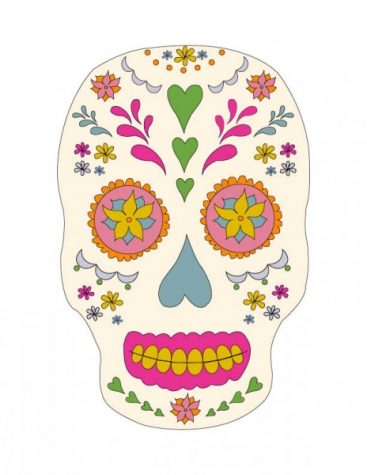Day of the Dead: finding meaning through the past

The period beginning Oct. 31 and ending Nov. 2 marks the celebration of Day of the Dead. The rich and vibrant traditions of Day of the Dead originated in Mexico and are celebrated throughout Latin America. Today, the holiday is celebrated in connection with the Catholic holidays of All Souls and All Saints Day, but many traditions are taken from ancient Aztec rituals. The Day of the Dead allows families to honor those they have lost through joyous celebrations and festivities.
Though often mistakenly associated with Halloween because of symbols like costumes, painted faces and colorful expression, Day of the Dead is not focused on any element of fear or spookiness.
“[Day of the Dead is] definitely not a costume party,” TU GENTE executive board member Paul Trujillo said.
Rather, the costumes and painted faces are done “as a way to invoke spirits or to make the spirits feel welcome,” Tulane Latin Studies Professor Amy George-Hirons said.
According to George-Hirons, the main focus of the holiday “is a different philosophy on life and death and the continuity between the two” so that humanity can connect to death in a more meaningful way.
Some of the most recognizable symbols of Day of the Dead include candy skulls, skeletons, decorated altars and colorful costumes and masks. Traditionally in Mexico, families visit the graves of their ancestors and bring flowers, food, incense and pictures to decorate the graves of their ancestors. These elements serve as a way to honor, remember, celebrate and reflect the colorfulness and vibrancy of the lives their loved ones lived on earth.
During the period of Day of the Dead, it is believed that the different symbolic elements reflect what George-Hirons describes as an “alternate reality” in which the ancestral spirits are able to return to the living world and join the celebration with their families.
At Tulane, the organization TU GENTE gives Latinx students and their supporters a place to celebrate and learn about the wide variety of traditions of Day of the Dead. Each year, TU GENTE produces an ofrenda and invites students to paint a candy skull to place on the altar, “as a way of celebrating someone they know and love who is now in the afterlife,” Trujillo said.
Death is a universal human experience, and thus anyone can appreciate the ways that Day of the Dead allows humanity to find meaning in the lives we lead, as well as those the lives of who came before us.
Paul Trujillo previously served as a Sports Layout Editor but is no longer affiliated with The Hullabaloo.
Leave a Comment
Your donation will support the student journalists of Tulane University. Your contribution will allow us to purchase equipment and cover our annual website hosting costs.



Silva Raker • Oct 18, 2018 at 11:12 am
Great article! Well-researched and clearly written. I now have a better understanding of Day of the Dead.